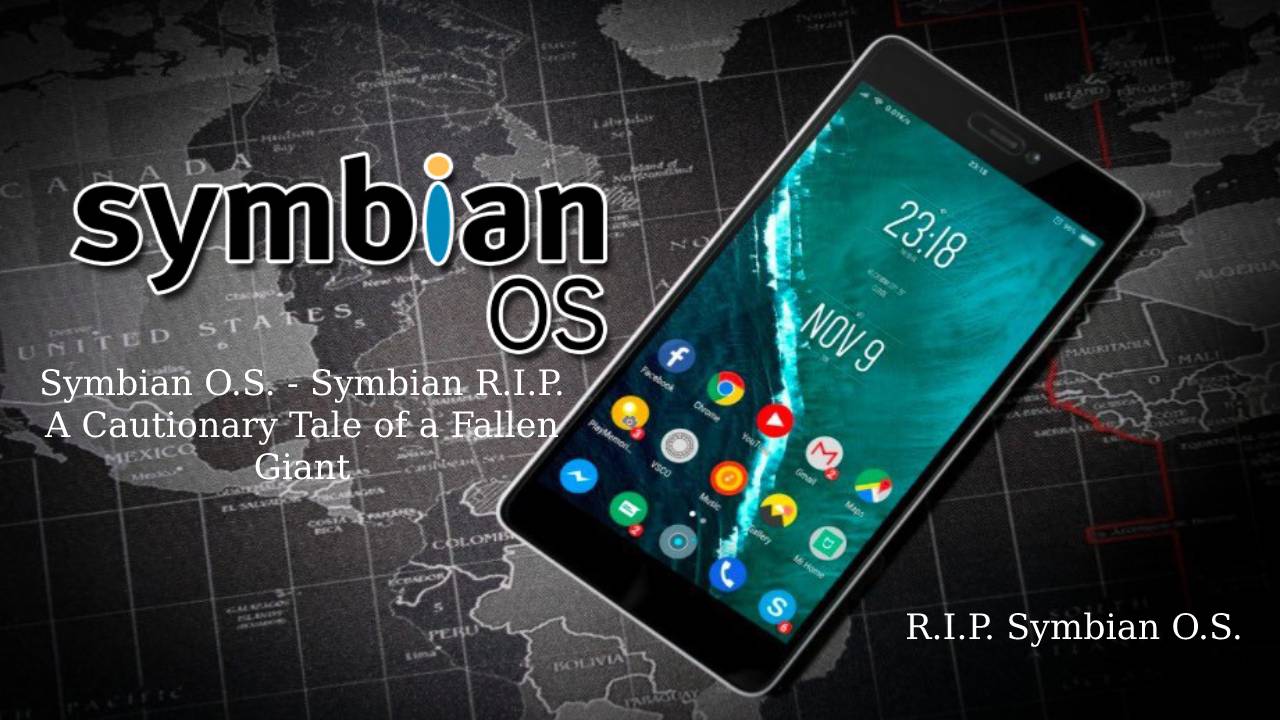Symbian O.S.
Symbian O.S. is a functional system design for mobile devices; It was the leading smartphone platform from 2003 to 2010 also in 2011 in Europe.
Subsequently, the operating system became the leader.
Initially, the Symbian kernel operating system did not provide any user interface.
Instead, it is the basis for two major smartphone user interface platforms: S60 and U.I.Q.
These are the branches of development, and different companies support each of the components.
Unlike Android, with its various cosmetic user interfaces, Symbian user interfaces ran deeper in code.
Applications written for one of those platforms were not directly compatible with the other.
Visually, the S60 and U.I.Q. had nothing in common, and U.I.Q. was designed with touch screens in mind.
Support for Nokia developers
- While the death toll resonates, what was playing for Symbian this week could hardly have been quieter or less recognized.
- Not an official press release, not a statement from Nokia C.E.O.
- Stephen Elop, too busy with his obsession with Windows Phone 8, not even a blog post.
- Instead, the developer support team had to tell the Nokia E7 user that he didn’t care about his discovered bug.
- Symbian is in “maintenance mode,” and its evolution (and thus the life cycle) has come to an end.
- The villains will immediately rush to say that Symbian’s relevance ended much earlier, and they will be correct.
- Once the king of the ring, Symbian hasn’t been able to deal a hard blow for years, and now, drunk and falling to the canvas, he’s just waited for the tenth count.
Historic heights

- It has not always been the case. After falling this far, it’s easy to forget how high Symbian once climbed and how it influenced putting cell phones in our pockets.
- Based on the Psion EPOC operating system in the late 1980s and included in class overriding devices such as the Psion Series 5 and Psion Series 7 P.D.A. late 1990s.
- EPOC has been renamed “Symbian O.S.” when in 1998, the Psion software division became Symbian Ltd in a large joint venture with Ericsson, Nokia, and Motorola.
- The deal set the benchmark for creating a standard platform for the world’s largest handset manufacturers.
- Nokia gradually became the dominant operator, reaching a market share of almost 50% in 2007, which no other company can achieve anymore.
- However, Symbian’s success was even more significant, as Gartner claimed to be present on nearly 70% of all phones sold right now (see chart).
- Android is now approaching a similar level, but with Windows Phone 8 and BlackBerry 10, it is doubtful that it will ever surpass it.
Hardware innovation
- During Nokia’s heyday, quantity over quality was a common accusation, but Symbian was the driving force behind hardware innovation.
- In late 2006, Nokia introduced the N95 with Symbian S60 and, for the first time, refused to call it a phone.
- Instead, it was a “mobile multimedia computer.” With HSDPA, 5MP camera, 30fps video playback, Wi-Fi, Bluetooth, microSD expansion slot, and stereo speakers, it was certainly way ahead of its time.
- It sold like a cake, and the later N95 8 G.B. (pictured) sells even better.
- By providing phone makers with a common platform, Symbian has given them the ability to focus on hardware.
- The problem was that Symbian was so familiar, so dominant, that I took it for granted when Apple was about to revolutionize mobile phone software with its iPhone.
Symbian R.I.P.: A Cautionary Tale of a Fallen Giant
- Symbian is in upkeep mode, and no new features will be implemented [ed] without a virtuous cause (commercial case).
- We have printed down your ideas for future development if there is a chance to release new features.
R.I.P. Symbian O.S.
- One of the first mobile operating systems, Symbian, is final. But Nokia, the company that developed the O.S., promises ongoing technical support throughout 2016.
- The latest phone to include Symbian is the Nokia Pureview 808.
- Nokia now supports the Windows Mobile edition.
- The 200-300 million Symbian devices still active today will receive updates and support, which will not come from Nokia but Accenture.
- TheDroidGuy notes that “Symbian is a very complex operating system, to modify and develop.
- It took the company around 20 plus months to develop a new Symbian device to perspective its complexity.
- It’s been nearly two years, which clearly shows that the O.S. is not designed to compete with Android, iOS, and Windows Phone.
- It only takes Nokia about a year to build a Windows phone, which is almost half the time it takes for Symbian. “
R.I.P. Symbian is now Nokia Belle
- It is the finish of an Era, or rather, its end. Nokia has ditched the Symbian brand from its operating system. and now Nokia calls it Belle – no more Symbian S60 versions.
- Now, Nokia calls it Belle – no more Symbian S60 versions, just Nokia and the version name.
- The move likely followed after Nokia sold and outsourced Symbian to Accenture, which would mean it no longer owns the Symbian brand.
- Nokia also announced that it would release the Belle update for the Nokia N8, E7, E6, X7, C6-01, C7, and Oro starting in February 2012.
- However, the new Nokia N8 devices will ship from its manufacturing facilities. Belle on them.

